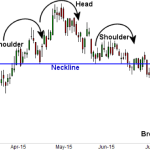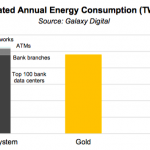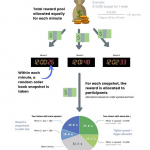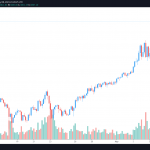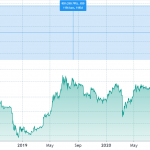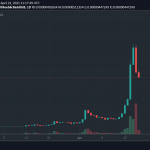Weekly Recap
| Asset | Current Value | Weekly Change |
| S&P 500 | 2380 | -0.45% |
| DAX | 12638 | -1.22% |
| WTI Crude Oil | 50.48 | 4.77% |
| GOLD | 1255.00 | 2.11% |
| Bitcoin | 1985 | 13.43% |
| EUR/USD | 1.1205 | 2.74% |
Global stocks had their most volatile days since the US election in November, as the recent scandal of the new US president sparked a strong sell-off on Wednesday. The major indices recovered well after the slump, although the previously leading NASDAQ lagged the other benchmarks, hinting on a change in the underlying trends. European and Asian equities followed the US market lower, with Japanese stocks being hit hard by the renewed safe-haven demand for the Yen. The late week bounce was weak in the Nikkei, the DAX, and the EUROSTOXX 50, while the S&P 500 was helped by the relative strength of the energy sector.
The Chinese market traded sideways during the global correction, but it failed to regain its previous losses, despite being among the stronger regions globally. Commodities head a mostly positive week, even as the mid-week decline affected the risk-on part of the segment. Gold finished above the $1250 level as it got a boost from the negative sentiment, while crude oil surged above $50, as the OPEC and Russia agreed to extend the previous production cut by 9 months, and the global market showed signs of stabilization. The USD has been the weakest major currency amid the political turmoil in the US, while the Yen, the Euro, and the Swiss Franc gained significant ground during the week. Commodity currencies also rallied thanks to the Dollar slump, while the Pound finished above the 1.30 level for the first time since last September.
US Dollar Index, Daily Chart Analysis
Cryptocurrencies
The coins experienced yet another rotation-week, as NEM, Bitcoin and Ethereum took over the leadership of the market from Ripple in the second half of the week, as BTC crossed the $2000 mark for the first time in history, while ETH jumped by around 50%. Ethereum caught up with XRP regarding market capitalization while NEM doubled in value, pushing Litecoin lower in the list. LTC got through a deep correction and it currently trades slightly below the $30 level, after getting close to $20 during the week. Ethereum Classic, Dash, and Monero also climbed higher, while Stellar was relatively stable after 2 weeks of crazy trading.

Ripple, 4-Hour Chart Analysis
Economic Numbers
Economic numbers remained mixed at best, especially in the US, where the housing market provided a couple of negative surprises, while industrial production was better than expected, and the Philly Fed index showed an encouraging reading. The British economy showed signs of life after a bearish period, and that helped the local assets against their global peers, with the CPI index and Retail Sales both coming in way above the consensus estimate. The other European releases were generally in line with expectations, but growth remains slow in the Eurozone.
Technical Corner

S&P 500, 4-hour Chart Analysis
The S&P 500 gained relative strength this week, as the broad and deep correction rearranged the US market, amid the surge in volatility. The extended topping process ended with a quick move lower with strong momentum. The decline was led by the NASDAQ, with most of the major global benchmarks losing anywhere between 2-3%. The S&P 500 spiked below the key support zone between 2350-2355 before recovering the majority of its losses and finishing the week near 2380. The short-term trend is now neutral after the benchmark moved out of its rising trend channel.
Key Economic Releases of the Week
| Day | Country | Release | Actual | Expected | Previous |
| Monday | CHINA | Industrial Production (yearly) | 6.5% | 7.0% | 7.6% |
| Monday | SWITZERLAND | PPI Index | -0.2% | 0.00% | 0.10% |
| Monday | US | ES Manufacturing Index | -1.0 | 7.6 | 5.2 |
| Tuesday | AUSTRALIA | Montery Meeting Minutes | – | – | – |
| Tuesday | UK | CPI Index | 2.7% | 2.6% | 2.3% |
| Tuesday | EUROZONE | Flash GDP | 0.50% | 0.50% | 0.50% |
| Tuesday | GERMANY | ZEW Economic Sentiment | 20.6 | 22.3 | 19.5 |
| Tuesday | US | Building Permits | 1.23 mill | 1.27 mill | 1.27 mill |
| Tuesday | US | Housing Starts | 1.17 mill | 1.26 mill | 1.20 mill |
| Tuesday | US | Industrial Production | 1.0% | 0.4% | 0.4% |
| Wednesday | UK | Average Earnings | 2.4% | 2.4% | 2.3% |
| Wednesday | UK | Unemployment Rate | 4.6% | 4.7% | 4.7% |
| Wednesday | EUROZONE | Final CPI | 1.90% | 1.90% | 1.90% |
| Wednesday | CANADA | Manufacturing Sales | 1.00% | 1.10% | -0.20% |
| Wednesday | US | Crude Oil Inventories | -1.8% | -2.5 mill | -5.2 mill |
| Thursday | JAPAN | Prelim GDP | 0.5% | 0.4% | 0.3% |
| Thursday | AUSTRALIA | Employment Change | 37,400 | 4,500 | 60,000 |
| Thursday | AUSTRALIA | Unemployment Rate | 5.7% | 5.9% | 5.9% |
| Thursday | UK | Retail Sales | 2.3% | 1.2% | -1.8% |
| Thursday | US | Initial Jobless Claims | 232,000 | 240,000 | 236,000 |
| Thursday | US | Philly Fed Manufacturing | 38.8 | 18.9 | 22.0 |
| Friday | CANADA | CPI Index | 0.4% | 0.5% | 0.2% |
| Friday | CANADA | Core Retail Sales | -0.20% | 0.20% | -0.10% |
The Story of the Week: The OPEC Production Cut: A Tale of Unintended Consequences

The Change of the Cost Curve of US Shale Oil Producers (Source: Goldman Sachs)
Shale oil has been dramatically transforming the energy segment in recent years, but how much so? Ecological impacts aside, the fracking technology went from an interesting alternative to deep-water and other extremely costly oil sources, to being a threat to the dominance of the OPEC. The chart above shows how the US producers lowered their cumulative break-even curve to the point where most of the hypothetical production of the shale players would be profitable between $50 and $60 per barrel. Compared that to the fact that 3 years ago there was virtually no profitable shale production below $80 per barrel.
Now, this is where it gets interesting. Last years crude oil rally topped out, guess what, near $55 per barrel, which is eerily close to the estimated breakeven of the bulk of the shale production. And that’s not a coincidence; most analysts agree that shale-oil, given its flexible nature, will do just this— cap the price of crude oil, while also limiting the profits of the traditional oil producers. Sure enough, the OPEC just this week announced the extension of a production cut that was supposed to stabilize the market and help a rebound in prices.
But what are the consequences of the deal? Long story short, it leads to a slow decline in the market share of the cartel, while encouraging shale producers to innovate even more and push this invisible price-cap even lower. And to go back to the root of the historic decline in the price of oil in 2015, it was none other than Saudi Arabia that flooded the market with cheap oil, in an attempt to knock US shale players out. What really happened, is that the slowing of the global demand growth coupled with the “forced” shale revolution brought about a new era for the whole energy complex.


